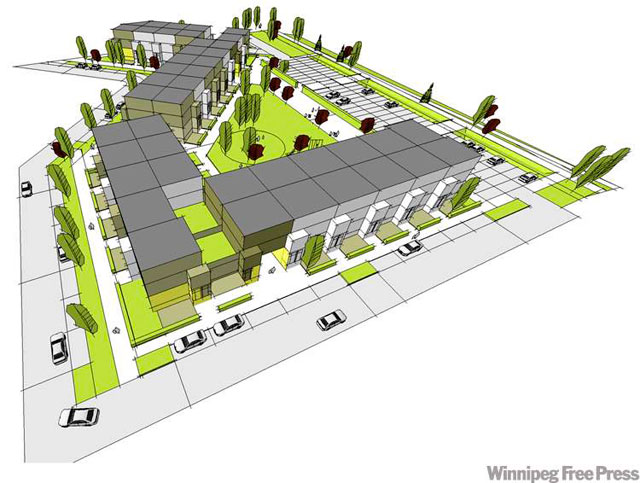
In December of 2002, the Frontier Centre for Public Policy released a document entitled Let's Worry about Stagnation, not Sprawl. It concluded that because Winnipeg had maintained its density in comparison to other cities, urban sprawl should not be a public concern. Planning policies that promoted density were dismissed as "an unnecessary prescription for a problem that doesn't exist in Winnipeg."
How times have changed.
While it may have been true that after decades of slow growth Winnipeg had until then managed to avoid the sprawling suburban development that was beginning to define cities across Canada, in the eight years since, we have more than caught up to the others. With a population increase of nearly 50,000 people over that time, a wave of new auto-centric, low density suburbs are today pushing the city's edges outwards in every direction.
Generally unaware of the connection, Winnipeggers voiced a number of concerns during the recent civic election that can be tied directly to the effects of this outward growth. Property taxes, road maintenance, the provision of civic amenities and services were all identified as important issues and each becomes a greater challenge as the city sprawls. In simple terms, with a lower population density every individual taxpayer becomes financially responsible for maintaining a greater proportion of roads, community centres and services like snow clearing and garbage collection.
Increasing density in the future will be a necessary strategy in improving the economic sustainability of the city without imposing crippling property tax increases. Simply restricting suburban development, however, is not the answer. As in every western city, the suburbs are a permanent reality of our urban landscape. The successful cities in the future will be those that are able to manage their suburban growth by breaking away from the low-density model, promoting walkable, mixed use neighbourhoods with a range of densities, housing choices and demographics.
Faster growing cities have long understood the significant role public transit can play in promoting infill development that increases the density and economic sustainability of existing suburbs. The convenience of living near a successful rapid transit system can make access points attractive catalysts for new higher density mixed-use development within established communities.
This strategy for urban growth has been dubbed Transit Oriented Development (TOD) which typically involves a combination of residential, employment and shopping opportunities, located within a five-minute walk of a major transit stop. By controlling where these hubs are located, planners are able to target strategic locations within the city for infill development. TOD can allow a city's transit investment to transcend that of transportation infrastructure, becoming an opportunity for city building and economic growth.
While in Winnipeg citizens generally rally against infill development and neighbourhood densification, in high-growth cities like Calgary and Edmonton civic elections are fought over where the next rapid transit lines are to be built as residents have come to realize the positive economic impact they can have on their communities.
Currently awaiting approval from city council, the proposed Yards at Fort Rouge is set to become Winnipeg's first TOD development. Located along the new rapid transit corridor on an abandoned rail yard east of Pembina Highway, it will bring 1,800 new residents to the Lord Roberts neighbourhood at its completion. This increase will restore the community's density to 1971 levels, improving the viability of the south Osborne commercial area, reversing the declining enrolment at local schools and breathing new life into underused community centres.
Unlike the sprawling low-density suburbs for which the city must incur the substantial cost of building and maintaining new supporting infrastructure such as roads, sewers and parks, the Yards at Fort Rouge will connect directly into and enhance the existing commercial, social and infrastructure networks of the established community.
The master plan developed by +White Architecture follows the acknowledged formula for successful TOD development. The highest density structures in the form of two towers will be located directly adjacent to the new transit station. The size of the buildings will transition down to low-rise townhouses with front yards along the sidewalk that relate directly to the scale and character of the existing neighbourhood. New parks, bike trails and pathways will weave through the development, connecting it to the greater community.
The Yards at Fort Rouge represents an exciting paradigm shift in the way Winnipeg responds to its growth. It is a new way of thinking about suburban development that will become the first significant sustainable suburb in our city.
With careful planning that establishes sensitive connections to the existing community, the Fort Rouge project might one day exemplify the notion that an appropriate density increase in an established neighbourhood is something that can be embraced without fear, promoting the long-term sustainability of both our individual communities and our city as a whole.
Brent Bellamy is senior design architect for Number Ten Architectural Group. Email him at Bbellamy@numberten.com.
Republished from the Winnipeg Free Press print edition November 29, 2010 B9

